宝骏730后悬架(扭转梁)设计(含CAD零件图装配图,CATIA三维图)(任务书,开题报告,论文说明书10000字,CAD图纸9张,CATIA三维图)
摘 要
悬架的主要功能是传递比如支持力、制动力和驱动力等作用在车轮和车身之间的一切力和力矩,而且减轻不平整的地面传给车身的冲击载荷、衰减由此引起的振动、保证乘员的舒适性、减小货物和车辆本身的动载荷。
本次设计是根据宝骏730后悬架维修手册等资料和数据,设计计算和选取合适的悬架参数,如静挠度、动挠度等。并且学习并应用二维软件CAD,三维软件CATIA等获取设计参数。掌握理解建立的悬架模型,分析后悬架的种种特性。这次宝骏730的后悬架设计基本完成了悬架设计的要求,并让我熟悉和了解到后悬架的作用特性和性能。
关键词:后悬架、扭转梁式、减振器、螺旋弹簧
Abstract
Suspension is the main purpose of the transfer function between the wheel and the body all the force and moment, such as support, braking force and driving force, and mitigate the uneven road surface to the body of the impact load, attenuation caused by vibration, ensure occupant comfort, reduce goods and dynamic load of the vehicle itself.
This design is based on the known data, setting reasonable suspension after partial frequency, select the appropriate spring parameters, and select reasonable shock absorber damping.Master the function of the cad 2013, 3 d design software CATIA, and be able to obtain corresponding design parameters.Mastering the multi-body dynamics analysis software ADAMS, through the above for the size of the parameters and characteristic parameters to establish analysis model of the vehicle suspension.Use of suspension analysis model is set up, understand the characteristics of the suspension.This design basically completed the research of the related content analysis, through the process, make us detailed understanding of the structure, function and movement characteristic of the suspension.
Key Words:rear suspension、Torsion Beam、shock absorber、spiral spring
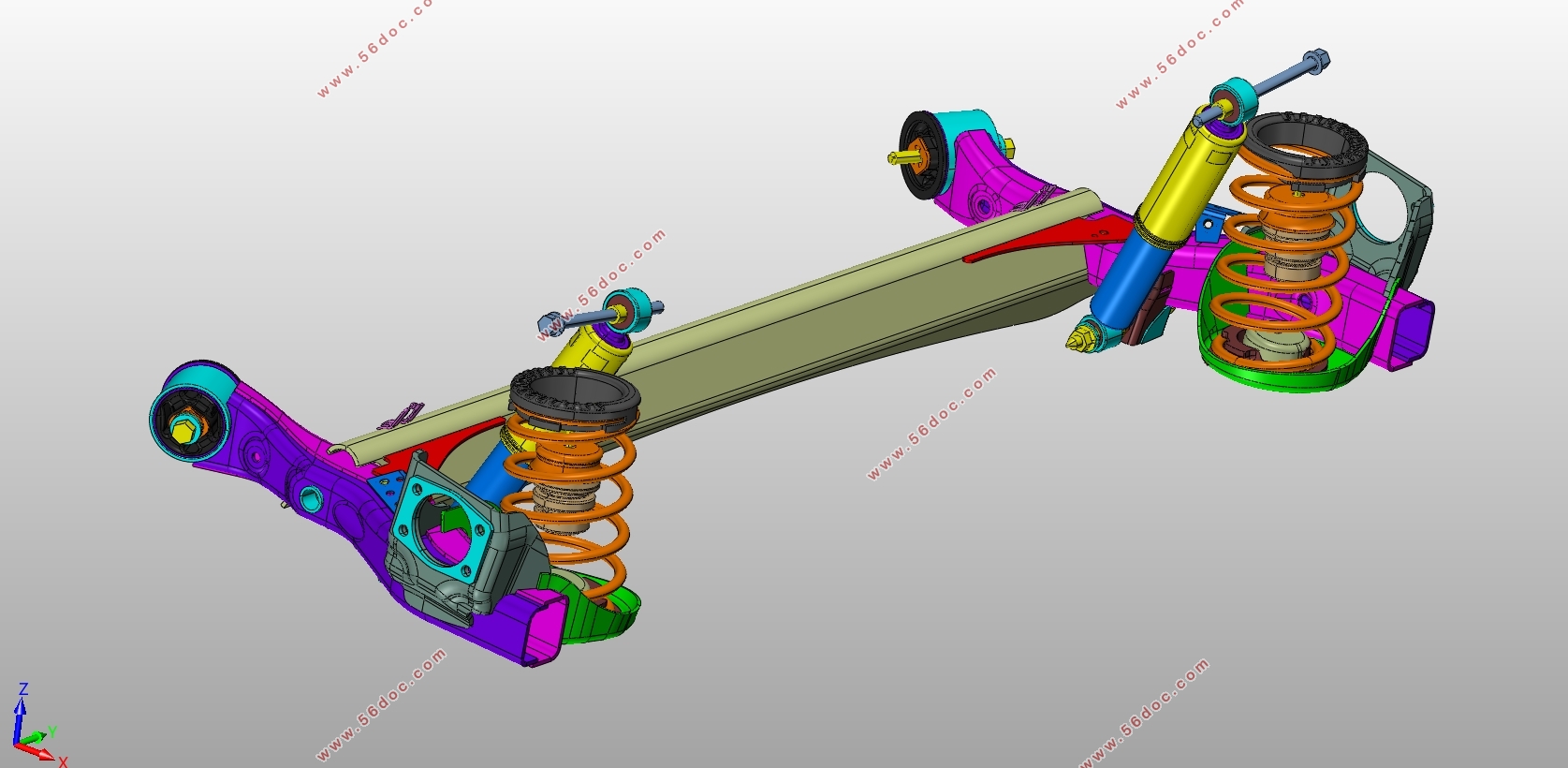
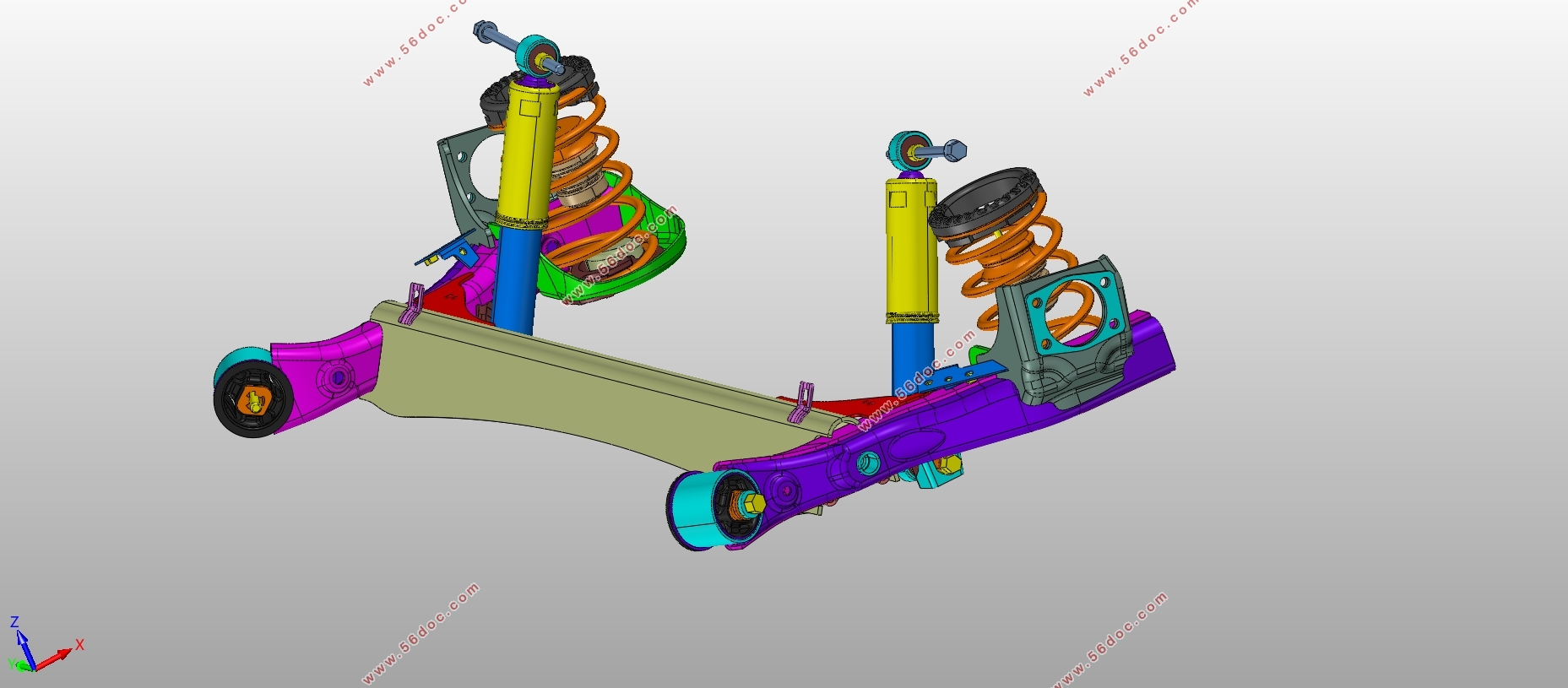
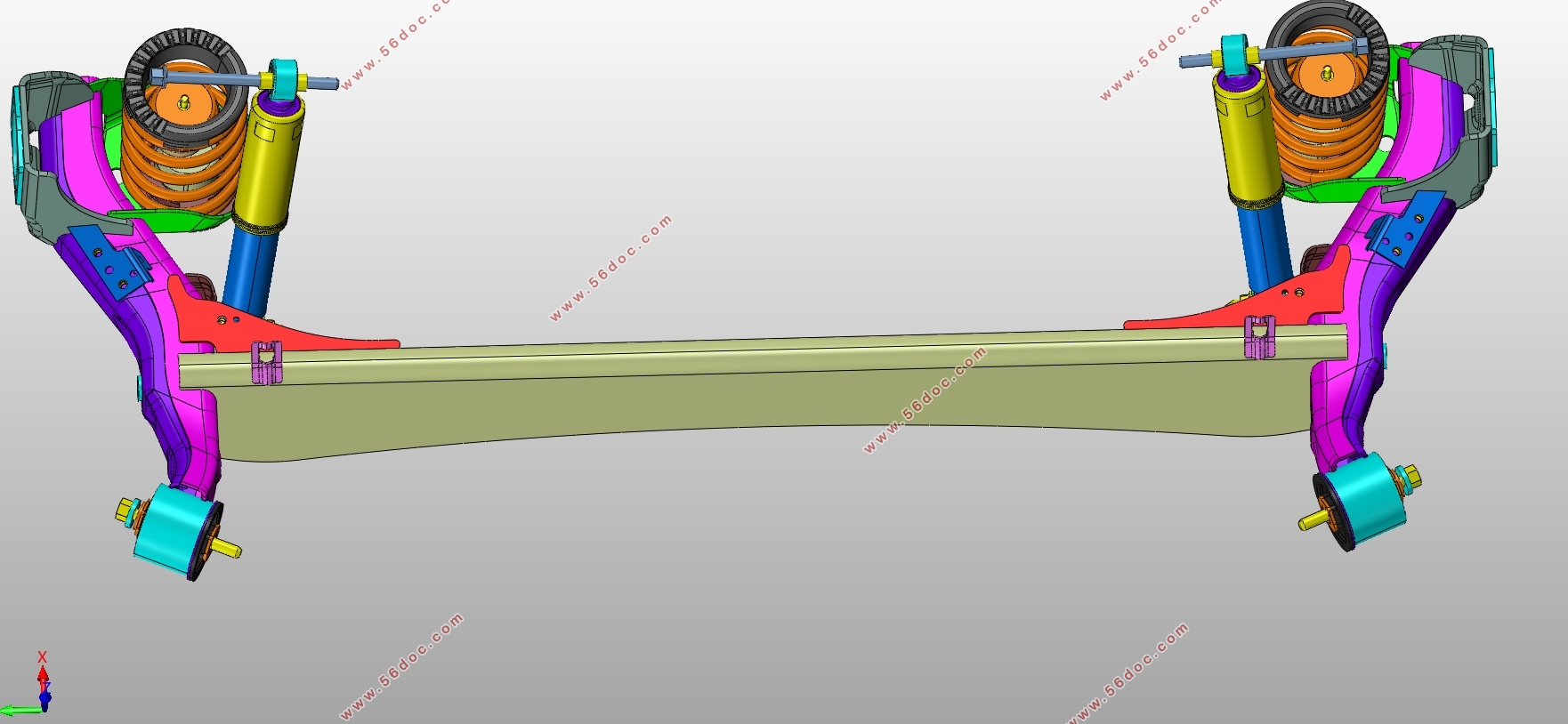
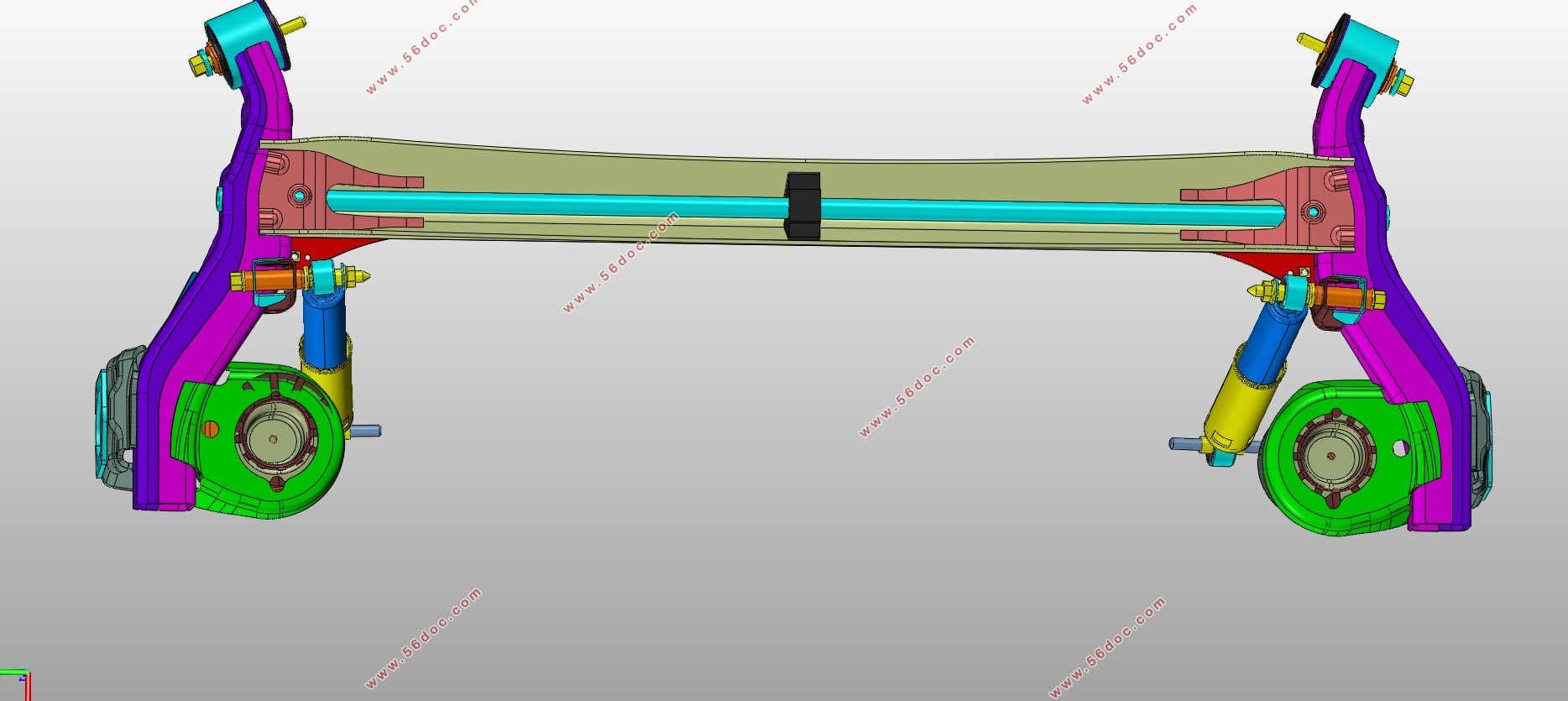
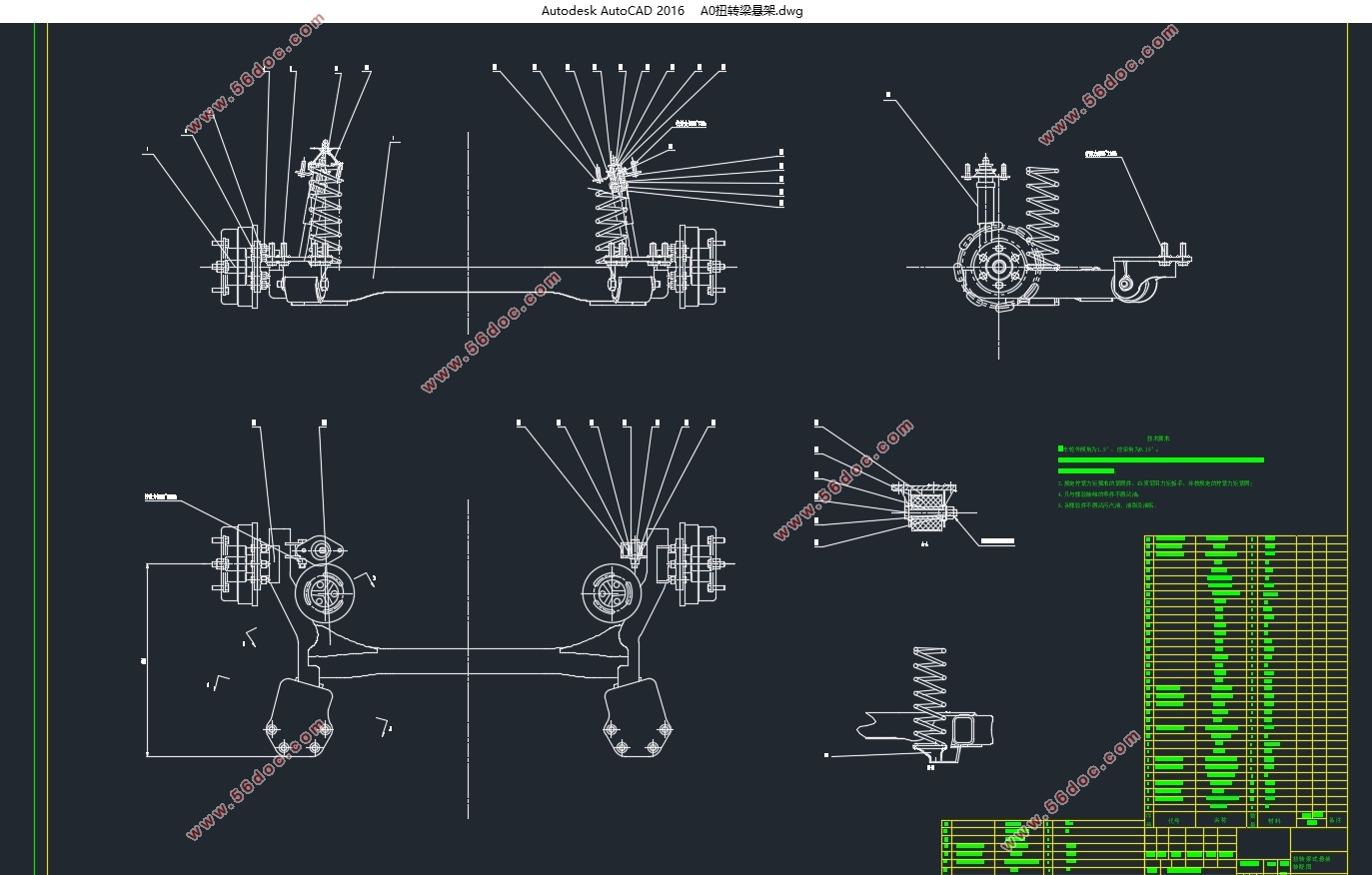
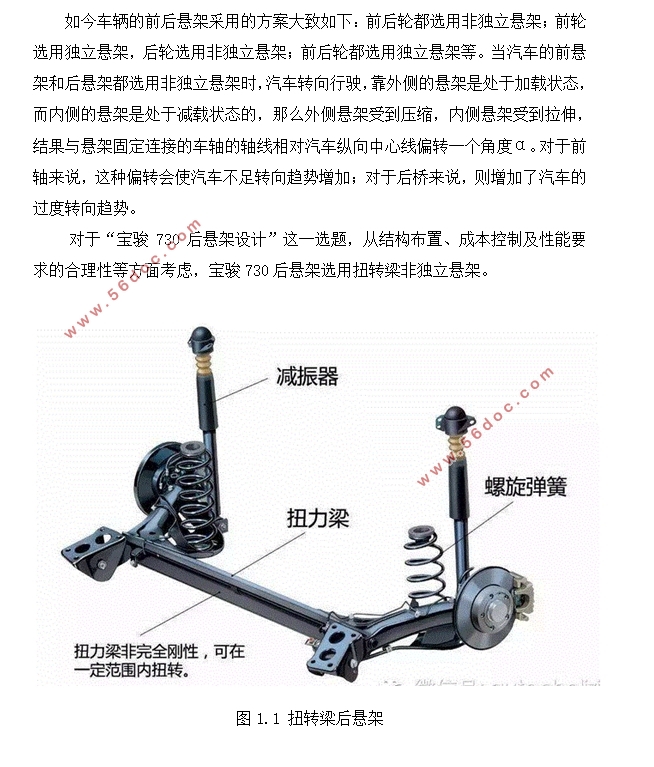
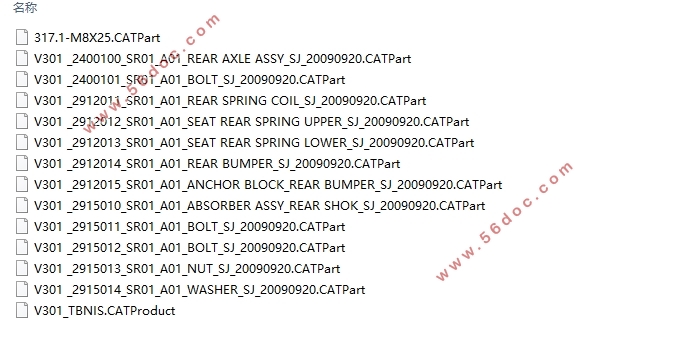

目录
第1章 绪论 1
1.1 悬架的功能 1
1.2 悬架结构形式的分析与选择 1
1.2.1 独立悬架和非独立悬架 1
1.2.2 后悬架的选型 2
第2章悬架对汽车主要性能的影响 3
2.1 悬架对汽车平顺性的影响 3
2.1.1悬架弹性特性对汽车行驶平顺性的影响 3
2.1.2悬架系统中的阻尼对汽车行驶平顺性的影响 6
2.1.3非簧载质量对汽车行驶平顺性的影响 8
2.2 悬架与汽车操纵稳定性 8
2.2.1汽车的侧倾 8
2.2.2侧倾时垂直载荷对稳态响应的影响 10
第3章后悬架系统的主要零部件参数的计算选择 13
3.1 悬架静挠度 13
3.2 悬架动挠度 14
3.3 悬架的工作行程 14
3.4 悬架的刚度计算 14
第4章悬架主要零件设计 17
4.1 螺旋弹簧的设计 17
4.1.1 螺旋弹簧的刚度 17
4.1.2 计算弹簧钢丝直径d 17
4.1.3 弹簧校核 17
4.2 减振器的设计 18
4.2.1 减振器的分类 18
4.2.2 相对阻尼系数ψ的确定 20
4.2.3 减振器阻尼系数δ的确定 21
4.2.4 减振器最大卸荷力 的确定 21
4.2.5 减振器工作缸直径D 的确定 22
第5章结论 24
参考文献 25
致谢 26
|

















